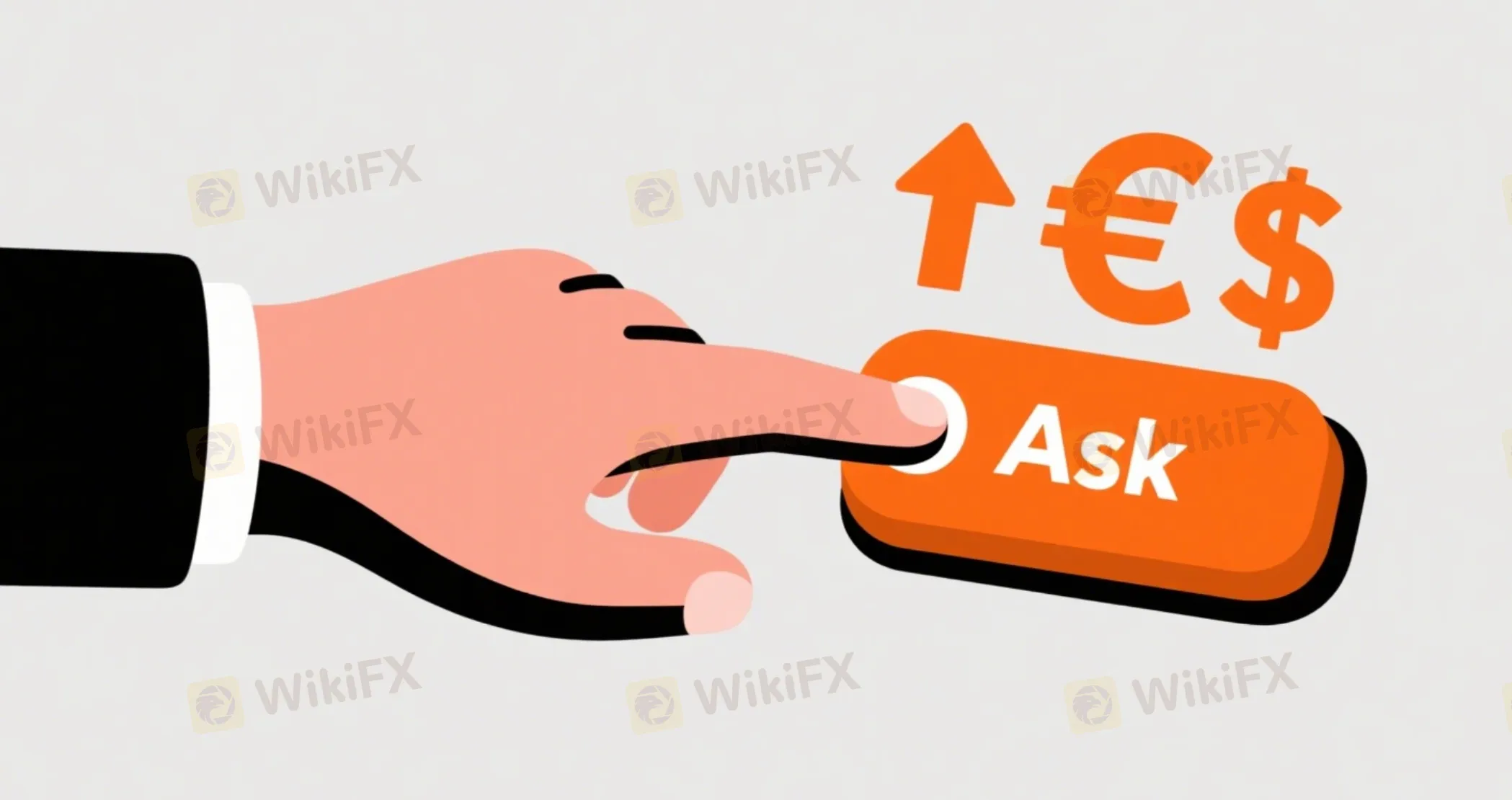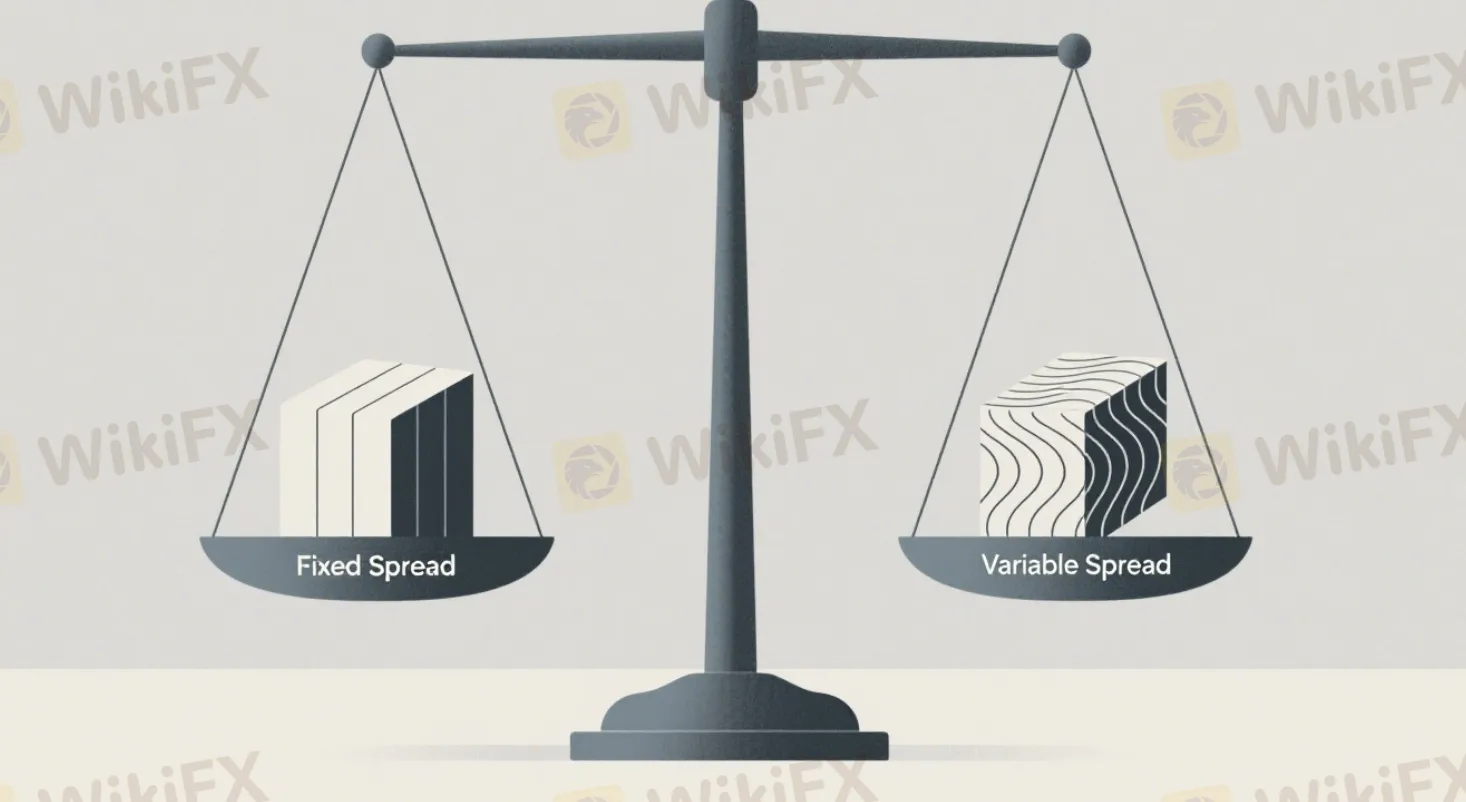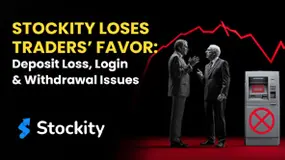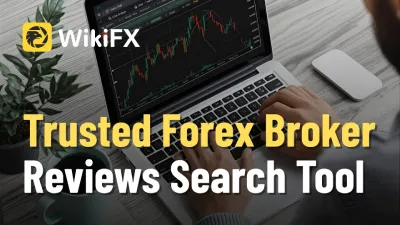简体中文
繁體中文
English
Pусский
日本語
ภาษาไทย
Tiếng Việt
Bahasa Indonesia
Español
हिन्दी
Filippiiniläinen
Français
Deutsch
Português
Türkçe
한국어
العربية
What is Spread in Forex? How It Affects Your Trading Costs (A Complete Guide)
Abstract:The forex spread isn't an abstract concept. It's a tangible, unavoidable cost that directly impacts your bottom line on every trade. Ignoring it is a luxury no trader can afford. By understanding what drives the spread and how it's calculated, you transform it from a hidden fee into a manageable variable. It becomes just another factor in your strategic analysis, alongside price action, indicators, and fundamental data.
The Invisible Cost
Every forex trade has one common cost. It's not a fee or commission you can see on your statement. It's built right into the price of every currency pair you trade.
So, what is spread in forex? It's the gap between the buying price and selling price of a currency pair. This is how most forex brokers make their money.
Understanding this cost isn't optional for traders. It directly affects your profits in every position you open. This guide will explain spreads completely. We'll go beyond basic definitions to show you how to calculate them, what forces influence them, and how to reduce their impact on your trading capital.
The Fundamentals of Spread
The Two Prices
To understand spreads, you need to know that every currency pair has two prices at any moment. Think of a currency exchange booth at an airport. They buy currency from you at one price and sell it back at a slightly higher price. The difference is their profit. Forex brokers work the same way.
These two prices are the Bid and Ask.
- Bid Price: This is what the broker will pay to buy the base currency from you. It's the price you get when you click “Sell.”
- Ask Price (or Offer Price): This is what the broker charges to sell the base currency to you. It's what you pay when you click “Buy.”
Remember this key rule: the Ask price is always slightly higher than the Bid price. This difference is fundamental to how the market works.

The Simple Definition
Now we can clearly answer: what is a forex spread? The spread is simply the difference between the Ask price and the Bid price for a currency pair.
Spread = Ask Price - Bid Price
This difference is the built-in cost of your trade. For many account types, this is how your broker gets paid for providing the platform and liquidity. You pay this cost the moment you enter a position.
How to Calculate Spread
Pips and Pipettes
Moving from theory to practice requires understanding how this price difference is measured. In forex, the standard unit for price changes is the “pip” (Percentage in Point).
For most currency pairs quoted to four decimal places, like EUR/USD or GBP/USD, one pip equals 0.0001.
For pairs with the Japanese Yen (JPY), quoted to two decimal places, one pip equals 0.01.
Many modern brokers offer even more precision through “pipettes” or fractional pips. These are the fifth decimal place for most pairs (0.00001) or the third for JPY pairs (0.001). This allows for more precise pricing and tighter spreads.
A Real-World Calculation
Let's walk through a practical example of what is a spread forex calculation. Imagine you want to trade EUR/USD and see this quote:
- Bid Price: 1.07502
- Ask Price: 1.07510
First, we calculate the difference between these prices to find the spread in pips.
Ask (1.07510) - Bid (1.07502) = 0.00008
This difference of 0.00008 represents 0.8 pips. The “8” is the eighth pipette, or 0.8 of a full pip. So the spread on this trade is 0.8 pips.
Converting to Monetary Cost
Knowing the spread in pips is only half the story. The crucial step is understanding what this means for your trading account in real money terms. The actual cost depends on your trade size, known as the lot size.
Let's continue with our 0.8 pip spread on EUR/USD and see how the cost changes with different trade sizes.
| Trade Size (Lot) | Pip Value (for EUR/USD) | Spread (in Pips) | Total Spread Cost |
| 1 Standard Lot (100,000 units) | ~$10 per pip | 0.8 pips | $8.00 |
| 1 Mini Lot (10,000 units) | ~$1 per pip | 0.8 pips | $0.80 |
| 1 Micro Lot (1,000 units) | ~$0.10 per pip | 0.8 pips | $0.08 |
This table shows that the cost is directly proportional to your position size.
This spread cost hits you instantly when you open the trade. Your position will immediately show a small loss equal to this amount. The market must move in your favor by at least this much for your trade to become profitable.
Types of Spreads
Fixed Spreads
A fixed spread is exactly what it sounds like: a spread that doesn't change, regardless of market conditions or time of day. This type is most commonly offered by brokers who operate as “market makers.” They set the bid and ask prices themselves and take the other side of their clients' trades. The main advantage of a fixed spread is cost predictability. You know exactly what your transaction cost will be every time you trade. This can be helpful for financial planning and traders who prefer simplicity.
Variable Spreads
A variable spread, also known as a floating spread, constantly changes. It widens and narrows in real-time based on the market's supply and demand for a currency.
These spreads are typically offered by brokers using an ECN (Electronic Communication Network) or STP (Straight Through Processing) execution model. These brokers pass your order directly to liquidity providers like banks and other financial institutions.
The spread you get is the best available bid and ask price from that network. This can result in extremely tight spreads during normal market conditions. But it can also lead to very wide spreads during periods of high volatility.

Fixed vs. Variable
Choosing between fixed and variable spread accounts depends on your trading style, risk tolerance, and priorities. A side-by-side comparison makes the decision clearer.
| Feature | Fixed Spreads | Variable (Floating) Spreads |
| Consistency | Constant. Does not change with market volatility. | Changes constantly. Narrows in high liquidity, widens in low liquidity or high volatility. |
| Cost Predictability | High. You always know your transaction cost upfront. | Low. The cost can change from the moment you see it to the moment you execute. |
| Typical Size | Generally wider than variable spreads during normal conditions. | Can be very tight (even near zero) but can become extremely wide during news events. |
| Slippage | Less common, but can still occur during extreme volatility. | More susceptible to slippage, especially during volatile periods when the spread is widening. |
| Best For | - Beginners who value predictability.<br>- Automated systems (EAs) not built for variable spreads.<br>- Traders who prefer an all-in cost without a separate commission. | - Scalpers and high-frequency traders seeking the tightest possible spreads.<br>- Traders active during high-liquidity hours.<br>- Traders who prefer a transparent model (spread + commission). |
| Broker Model | Typically offered by Market Makers. | Typically offered by ECN/STP brokers. |
Key Spread Drivers
The Core Factors
Understanding what a spread is leads to the next logical question: why does it change? The width of a variable spread isn't random. It's driven by several key market dynamics. Being aware of these factors helps you anticipate when costs might rise.
- Currency Pair Liquidity: This is the most significant factor. Liquidity refers to the volume of trading activity for a particular asset. The most heavily traded currency pairs, known as the “Majors” (like EUR/USD, USD/JPY, GBP/USD), have immense liquidity. With millions of buyers and sellers active at any time, the gap between the best bid and best ask price is incredibly small. This results in very tight spreads. For example, it's common for major brokers to offer spreads under 1 pip on EUR/USD during peak hours.
In contrast, “Exotic” pairs (like USD/ZAR or EUR/TRY) have far fewer market participants. This lower liquidity means there's a much larger gap between available buying and selling prices. This leads to significantly wider spreads that can often be 20 pips or more.
- Market Volatility: Volatility measures how quickly and dramatically prices change. During major economic news releases, such as the U.S. Non-Farm Payrolls (NFP) report or a central bank interest rate decision, uncertainty skyrockets.
In these moments, traders rapidly enter and exit positions. Liquidity can temporarily dry up as large players pull back. To protect themselves from the increased risk of sudden price jumps, brokers and liquidity providers widen their spreads substantially.
- Time of Day (Trading Session): The forex market operates 24 hours a day, but its activity level isn't constant. Liquidity and spreads are directly tied to which global financial centers are open for business.
Spreads are typically at their tightest when liquidity is at its peak. This occurs during the overlap of the London and New York trading sessions (approximately 8 AM to 12 PM EST). Conversely, spreads tend to widen during the less active Asian session or during the daily “rollover” period when one trading day ends and another begins.
- The Broker's Business Model: As we touched on earlier, a broker's model influences the type and size of the spread. A market maker who takes the other side of your trade might offer a wider, fixed spread but charge no commission.
An ECN broker, who simply connects you to the interbank market, will offer a very tight variable spread that reflects true market prices. But they'll charge a separate, fixed commission per trade. Understanding this trade-off is crucial when comparing broker costs.
The Impact on Profitability
The First Hurdle
The spread isn't just a minor detail. It's the first and most immediate obstacle you must overcome to achieve a profitable trade.
Every single position you open begins with an automatic, unrealized loss equal to the total cost of the spread.
For your trade to become profitable, the market price must first move in your favor by an amount sufficient to cover that initial cost. The formula for a successful trade is therefore not just about price direction, but about magnitude.
(Your Exit Price - Your Entry Price) > Spread Cost
A Scalper's Scenario
We've seen this principle frustrate countless new traders, especially those attempting short-term strategies like scalping.
Imagine you identify a potential 5-pip profit on a quick trade. You enter the position, and the market moves exactly 5 pips in your favor on the chart. However, if the spread on that pair was 2 pips when you entered, your actual net profit is only 3 pips (5 pips gain - 2 pips cost).
Now consider a worse scenario. The market moves 2 pips in your favor and then reverses. On the chart, it looks like you broke even. In your account, however, you're at a loss because the price movement wasn't enough to overcome the initial 2-pip spread cost. This is a primary reason why seemingly effective strategies can fail if spread costs aren't meticulously managed.
Stop Loss and Take Profit
The spread also has a direct and critical impact on how you set your risk management levels.
When you set a stop loss, you must account for the spread. A buy trade is closed at the Bid price. If your stop loss is set too close to your entry, a temporary widening of the spread could trigger your stop and close you out of a trade. This can happen even if the underlying market price never actually reached that level.
Similarly, a take profit on a buy order is also triggered at the Bid price. The market must move not just to your take profit level, but slightly beyond it to account for the spread before your order is filled.
A Strategic Guide
Choose the Right Broker
Your first line of defense against high trading costs is choosing the right broker and account type for your specific trading style. Answering a few key questions can guide your decision.
- Are you a scalper or frequent day trader? If so, you should prioritize finding the lowest possible transaction costs. This often means looking for an ECN/STP account that offers very low variable spreads and charges a separate, transparent commission. The total “all-in” cost (spread + commission) is often lower for high-frequency traders with this model.
- Are you a swing or position trader? If you hold trades for several days or weeks, the exact spread at the moment of entry is less critical than for a scalper. A standard account with slightly wider but predictable fixed spreads might be preferable. It simplifies cost calculation and reduces stress.
- Do you trade during news events? If your strategy involves trading during high-volatility news, you must be acutely aware that variable spreads will widen dramatically. A fixed spread account could offer a degree of safety. Or you might decide that avoiding these specific times is the most cost-effective strategy.
When evaluating what spread in forex a broker offers, always calculate the total cost. Don't be lured by “zero spread” claims without checking the associated commission fees.
Time Your Trades
The second strategy is to align your trading activity with periods of high market liquidity.
Aim to execute the majority of your trades during the most active market hours, particularly the London-New York session overlap. During this four-hour window, trading volume is at its daily peak. Spreads on major and minor pairs are at their tightest.
Conversely, be cautious about placing trades during quiet periods. This includes the late Asian session, major bank holidays, and late on a Friday afternoon. Lower liquidity during these times almost always leads to wider, more expensive spreads.

Focus on Liquid Pairs
Unless your trading strategy is specifically designed for an exotic currency pair, it's far more cost-effective to focus on the majors and major crosses (e.g., EUR/GBP, AUD/JPY).
The cost savings from trading pairs with consistently low spreads are substantial. They will accumulate significantly over hundreds or thousands of trades. The lower spread is a direct advantage that improves the profit potential of every single trade.
Use Limit Orders
A market order instructs your broker to execute your trade immediately at the best available price. While fast, this can be risky if the spread suddenly widens at the moment you click. This results in a worse entry price than you anticipated.
A limit order provides a powerful layer of control. By setting a limit order to buy or sell at a specific price (or better), you ensure that your trade will only be executed if the market reaches your desired price. This prevents you from entering a trade at an unfavorable price caused by a sudden, temporary spike in the spread.
Conclusion
Making Spreads Work for You
The forex spread isn't an abstract concept. It's a tangible, unavoidable cost that directly impacts your bottom line on every trade. Ignoring it is a luxury no trader can afford.
By understanding what drives the spread and how it's calculated, you transform it from a hidden fee into a manageable variable. It becomes just another factor in your strategic analysis, alongside price action, indicators, and fundamental data.
Treating spread management as a core component of your trading plan is a non-negotiable skill for long-term success.
- The spread is the difference between the Bid and Ask prices and is a primary trading cost.
- Its cost is real and is calculated based on pips and your trade size.
- Spreads can be fixed or variable and are influenced by liquidity, volatility, and time of day.
- Managing spread costs through strategic broker choice, timing, and pair selection is critical for long-term profitability.
By applying the knowledge and strategies in this guide, you can actively reduce your trading costs, protect your capital, and become a more disciplined, cost-conscious, and ultimately, more profitable trader.
Disclaimer:
The views in this article only represent the author's personal views, and do not constitute investment advice on this platform. This platform does not guarantee the accuracy, completeness and timeliness of the information in the article, and will not be liable for any loss caused by the use of or reliance on the information in the article.
Read more

Stockity Loses Traders’ Favor: Deposit Loss, Login & Withdrawal Issues
Are your profits through the Stockity platform vanishing suspiciously? Does the forex broker allow you to withdraw only your initial deposit? Do you face illegitimate login issues on Stockity? Have you witnessed unexplained fund losses while trading binary options on Stockity? Traders report these unfavorable experiences on online review platforms. These experiences indicate a potential scam from this Marshall Islands-based forex broker. In this article, we have highlighted trader reviews of Stockity. Keep reading!

Trusted Forex Broker Reviews Search Tool
Discover the most trusted forex broker reviews and ratings. Use the WikiFX app to compare and find top brokers safely and confidently.

SC Urges Malaysians To Stay Alert As Scam Complaints Double Since 2020
Malaysia’s Securities Commission warns that complaints about unlicensed investment activities have doubled in five years—3,602 cases in 2024 and 2,039 in H1 2025—highlighting increasingly sophisticated scams targeting even professionals and seniors. Schemes often mimic legitimacy, then block withdrawals via “compliance” or “maintenance” excuses. The core defense is pre-investment verification and ongoing risk control.

Top Tips to Avoid Forex Margin Calls and Protect Your Capital
While technical indicators or chart patterns often capture the attention of forex traders, especially new ones, aspects such as margin requirements, equity, used margin, free margin, and margin levels are often overlooked. So, if you have received a margin call from your forex broker and are wondering how to deal with it, you probably do not know the concept of a forex margin call - what triggers it and how to avoid it. Being unaware of this concept can make you lose your hard-earned capital. In this article, we will provide you with all the information you need to know. Keep reading!
WikiFX Broker
Latest News
US and UK Sanction Cambodia-Based Prince Group Over $16B Scam
UAE Launches Sixth 'Caution' Campaign to Combat Forex and Online Investment Fraud
David Stockman On How The Fed's Money Printing Broke American Industry... And What Comes Next
Forex24 Faces CySEC Fine for Late Compliance Filing
One Wrong Move Wiped Out a Government Retiree’s Lifetime Savings
"Our Business Has Died": Texas Services Sector Sentiment Slumps Further In October
OctaFX Forex Brokerage $318 million Fraud Case in India: Authorities Arrest Pavel Prozorov!
How Filipinos Can Recover Funds from Crypto Scams Abroad
Top Tips to Avoid Forex Margin Calls and Protect Your Capital
FCA Daily Alert: Checkout FCA Consumer Warning List
Currency Calculator



